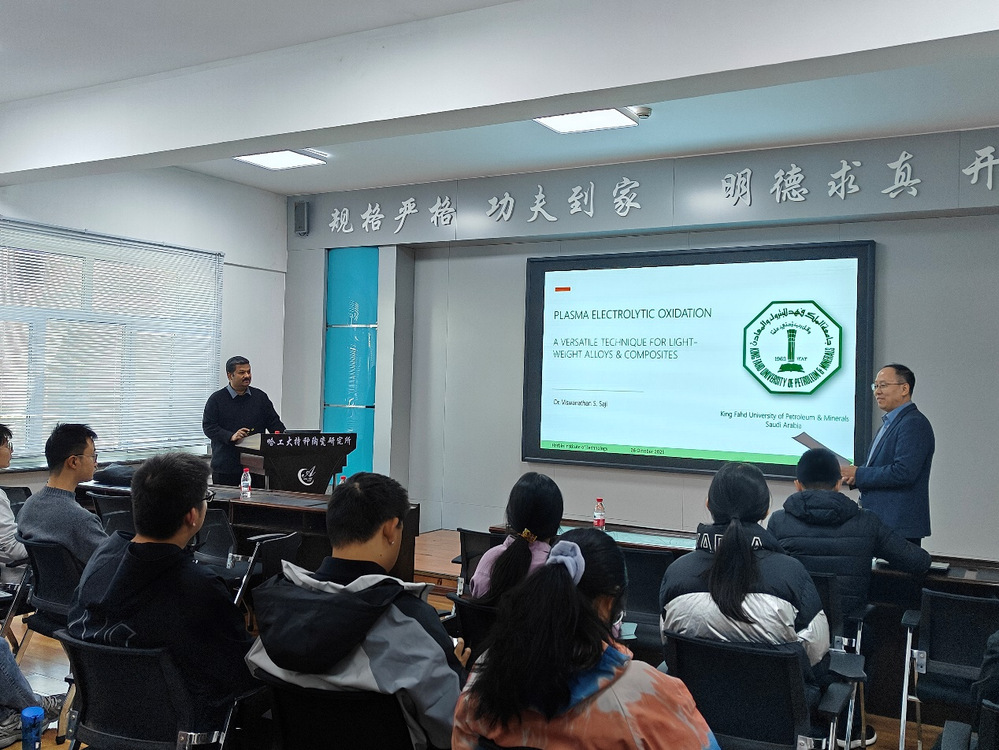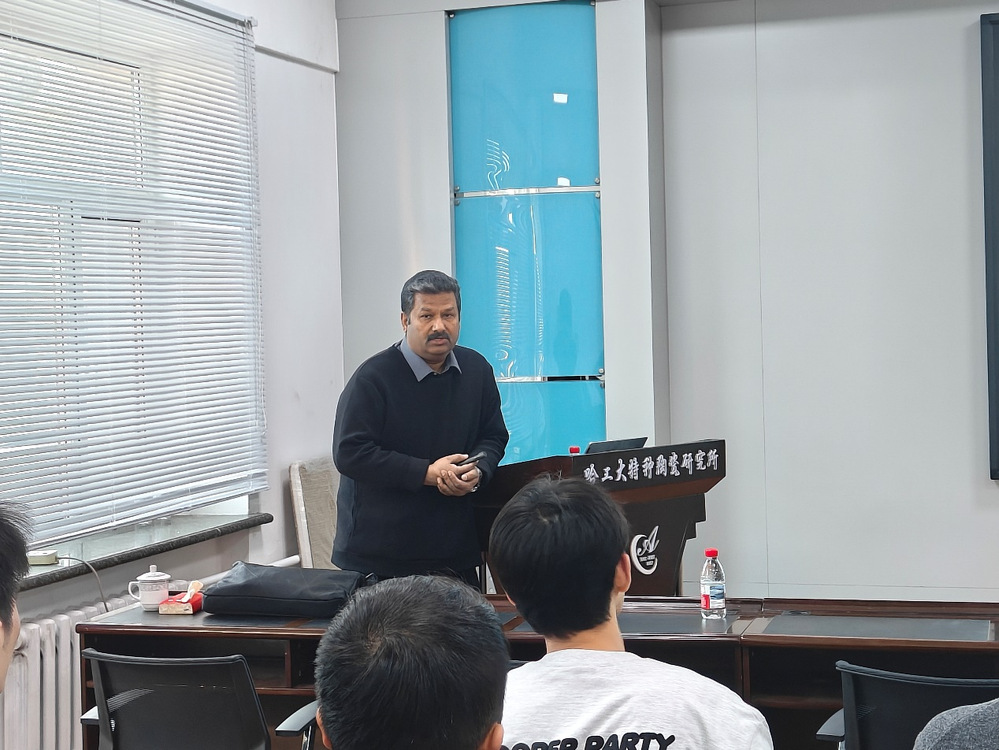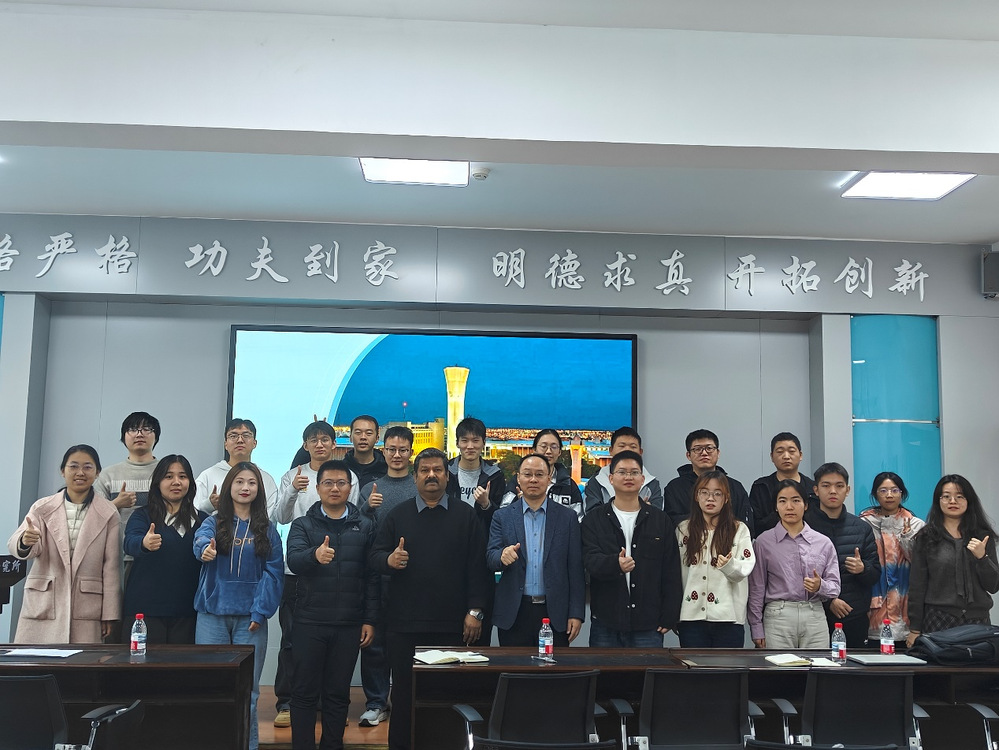on WeChat to
To keep pace with the cutting-edge development of materials science and strengthen teachers and students' understanding and innovation in the field of surface treatment of light alloys and composites, the School of Materials Science and Engineering successfully held the 13th MSE Lecture Forum on October 26, 2025, in Lecture Hall 417 of the Institute of Advanced Ceramics, Building C3, Harbin Institute of Technology (HIT) Science Park. The forum specially invited Professor Viswanathan S. Saji, a Second-Class Researcher from the Interdisciplinary Research Center for Advanced Materials at King Fahd University of Petroleum and Minerals (KFUPM) in Saudi Arabia, to deliver an exciting academic report titled Plasma Electrolytic Oxidation: A Versatile Technique for Lightweight Alloys & Composites. The report was hosted by Professor Wang Yaming from the School of Materials Science and Engineering, attracting enthusiastic participation from numerous teachers and students, and creating a lively academic atmosphere on site.
Professor Viswanathan S. Saji has profound expertise and remarkable achievements in electrochemistry, corrosion science and related fields. He has published over 100 SCI papers with a total of more than 5,000 citations and participated in compiling 15 books. With his outstanding academic influence, Professor Saji has delivered numerous invited reports on international academic stages, obtained multiple international grants, and enjoys high reputation in the academic community. In his report, Professor Saji pointed out that plasma electrolytic oxidation (PEO) technology is a key method for surface treatment of light alloys and composites. It can form thick and adherent protective oxide layers on their surfaces, significantly improving the wear resistance and corrosion resistance of materials. The prepared functional oxide layers can be widely applied in automotive, aerospace, mechanical manufacturing, biomedicine, thermal protection, catalysis, energy materials and other fields. He elaborated on the basic principles, types, action mechanisms and application scenarios of PEO technology, focusing on its growth mechanism and kinetic processes on metal matrix composites, enabling teachers and students to clearly understand how PEO technology forms uniform and dense oxide layers on the surface of metal matrix composites and the involved physical and chemical changes. Meanwhile, Professor Saji also deeply discussed the critical role of electrolytes in the composition and performance of PEO layers, noting that different electrolyte formulations can lead to significant differences in the composition, structure and performance of the generated PEO layers. Rational selection and adjustment of electrolyte components can precisely control the performance of PEO layers to meet the requirements of different application scenarios.
During the interactive exchange session, the on-site atmosphere was extremely active. Teachers and students actively raised questions regarding potential problems in the practical application of PEO technology, directions for technological improvement, and future development trends. Professor Saji's answers not only resolved the doubts of teachers and students but also inspired their interest in further exploring and researching PEO technology.
The successful holding of this forum provided a valuable opportunity for teachers and students of the School of Materials Science and Engineering at HIT to communicate and learn with top international scholars. It not only broadened their academic horizons, stimulated their enthusiasm for innovation in surface treatment technologies of light alloys and composites but also injected new vitality into the research and teaching of the school in related fields. It is believed that in the future, teachers and students of the school will achieve more breakthrough results in fields such as PEO technology and contribute to the development of national materials science.



October 26, 2025













